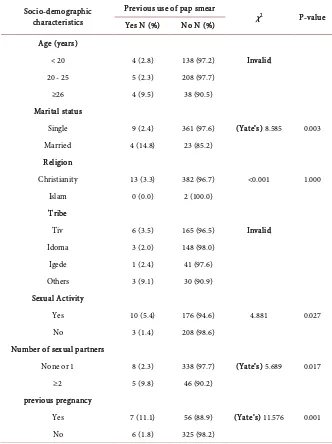Awareness and Attitudes towards Cervical Cancer Screening with Paps Smear and Its Utilization among Female Undergraduates in Makurdi, North Central Nigeria
Full text
Figure
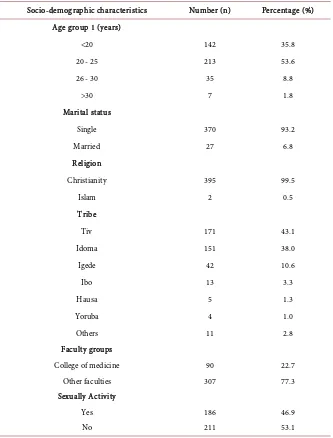
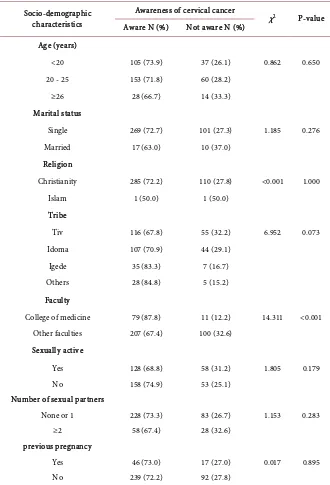
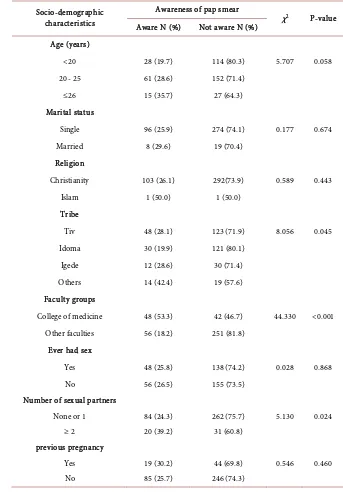
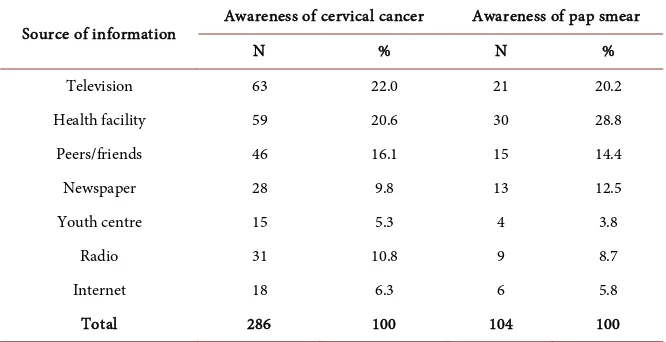
Related documents
By using a new source of 19th century Texas state prison records, the present study contrasts the biological living conditions of comparable blacks and whites in the American South
Generally, women’s attitudes and beliefs towards cervical cancer and the importance of screening test will affect their uptake and compliance of Pap smear
A high value for this indicator reflects a country’s greater integration into international trade flows, whether because its exports require the participation of intermediate
Flower colour, pubescence and the shape of stipules have been shown in preliminary hybridization studies (Stirton, 1975) on other species to be reliable
Whereas the majority of reentry research has focused on residential location, we use novel GPS data, combined with sophisticated measures of job accessibility, to examine both
The City University of New York (CUNY) School of Public Health and the Healthy Weight Commitment Foundation (HWCF) propose to engage in a unique academic-private-sector
BFP130: Music Video Production BFP160: Adaptations BCM110: Introduction to Digital Imaging BCM130: Web Technologies BFP170: Creative Project 1 Trimester 1 Trimester 2 Trimester
The goal for this research was to retrospectively evaluate the specific cancer treatment of elderly African Americans, Caucasians, and Hispanics with advanced stage IIIB or stage
